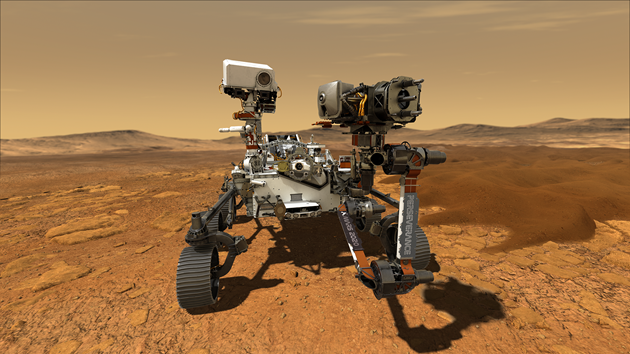ANCIENT rocks from the Isle of Rum are playing an important role in an international space mission to discover more about Mars.
A group of scientists have this week been collecting samples of rock from the NatureScot National Nature Reserve (NNR) as part of the NASA and European Space Agency (ESA)’s Mars Sample Return Campaign.
The campaign is assembling a defined set of rock samples from around the world that are comparable to rock samples from the Red Planet that are scheduled to be brought to Earth in 2033.
Due to its unique geology, Rum, off the west coast of Scotland, has been selected as the only UK site for sampling.

This is because some of its igneous rocks have a very similar mineral and chemical content to those that have been collected by NASA’s Perseverance Rover during its exploration of an ancient crater on Mars.
Intensive study of the rocks from Rum and other high-priority sample sites will crucially help scientists understand what methods of testing and analysis will work best in readiness for when the Martian rocks are brought to Earth.
As the first samples from another world, the Mars rocks are thought to present the best opportunity to reveal clues about the early evolution of the planet, including the potential for past life.
The Rum sampling is being led by Dr Lydia Hallis, a geologist and planetary scientist from the School of Geographical and Earth Sciences at the University of Glasgow, and member of the campaign’s Science Group.
Dr Hallis said: “These Rum rocks are an excellent comparison to a specific geologic unit on Mars – the igneous Séítah Formation within the Jezero crater – which is characterized by the mineral olivine, and which the NASA Perseverance Rover explored and sampled.
“Not only is the mineralogy and chemistry similar, but the two rocks appear to have a similar amount of weathering.
“This seems strange when we think how wet and warm Rum is compared to present day Mars, but billions of years ago when the Séítah Formation crystallised on Mars the difference in environment would not have been so pronounced.
“At this time Mars was much wetter and warmer, with a thicker atmosphere that may even have produced rain (though not as much as we get in Scotland!).
“Over time the Martian atmosphere thinned leaving the surface much dryer and colder, essentially halting any further weathering within Séítah and preserving the rocks at Jezero Crater for us to investigate today.”
NatureScot is Scotland’s nature agency, responding to the twin crises of biodiversity loss and climate change.

